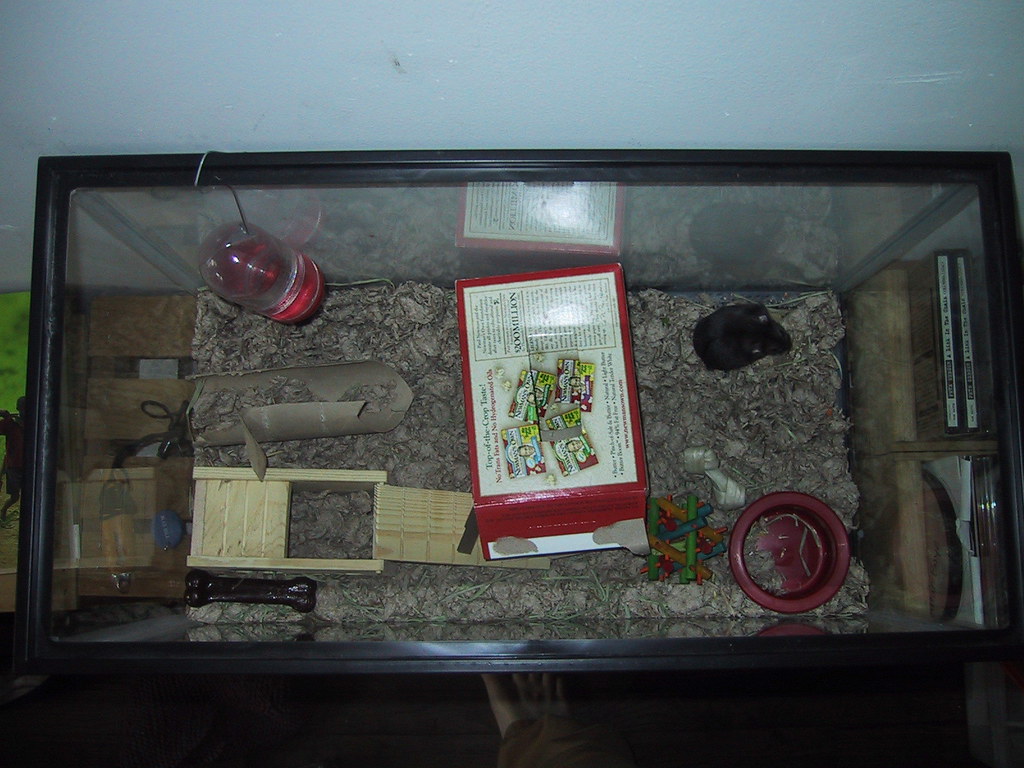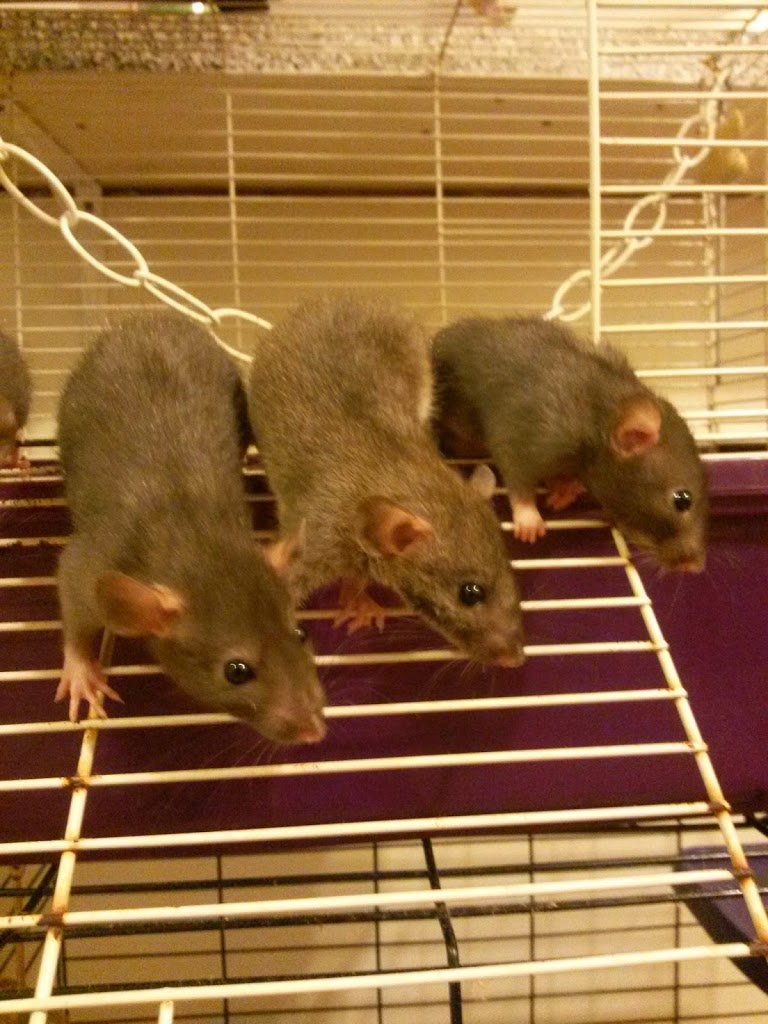Pick the Perfect Cage for Your Rats
Pick the Perfect Cage for Your Rats!
Rats need the proper place to call home. Choosing the right rat cage for your pets can feel like a drag, because there are hundreds of options out there that are available to you. You might spend hours scouring through your local pet shop and online stores trying to match features and price match. This post is designed to help guide through this process and help to make it a much simpler task so that your rats can have the perfect home a little faster, all while helping you be the best ratty parent that you can be.
Space Is Your #1 Concern for a Rat Cage
When searching, you want to make sure you have enough space. But how much space is adequate to providing your rats with a healthy, happy life? The general rule of thumb is that you want to find a cage that has at least 1.5 sq ft for each rat that you own. Since rats should always be in pairs (except in special cases of aggression or quarantine), your cage will need a minimum of 3 square feet of floor space. Bigger is always better though! This gives your rats space to have fun and exercise, rather than becoming depressed and cramped. Serious issues such as muscular dystrophy and obesity can occur when they are cramped in too little of a space. The double unit critter nation is perhaps the most popular rat cage in existence.
Well Ventilated Cages Are a Must!!
Rats are susceptible to different respiratory issues, and a well aerated environment is critical to ensure that your rats will live a long and healthy life. A well aerated cage usually has bars rather than glass walls. This allows air to move in and out freely, preventing cold or hot spots, dust build up, high humidity, and even helps to control odor. Stagnant cages can make your rats very sick. Therefore, you need to cross out any cages that don’t offer lots of airflow. The more closed off a cage is, the more moisture and heat can build up. This accelerates bacterial growth and decomposition of waste, something that makes one funky odor cocktail. Just avoid this situation with lots and lots of air flow!
Aquariums Are a Big No No!
 Unless you have a wide, long, shallow aquarium (these are usually purchased for reptiles such as snakes), aquariums should never be used to house rats. The reptile ones allow more airflow, but I still personally would not use them. They are also generally too small and don’t grant enough floor space for rats, especially more than 2. They allow the air to sit and humidity and dust to build up. You will also notice that even 3 days post cage clean, it will develop a foul, humid odor. The rats definitely don’t enjoy this. The only scenario in which any cage like this would be okay is for temporary housing, such as a female who is birthing or a rat who suddenly became ill or aggressive. They can also be used as temp quarantine cages too.
Unless you have a wide, long, shallow aquarium (these are usually purchased for reptiles such as snakes), aquariums should never be used to house rats. The reptile ones allow more airflow, but I still personally would not use them. They are also generally too small and don’t grant enough floor space for rats, especially more than 2. They allow the air to sit and humidity and dust to build up. You will also notice that even 3 days post cage clean, it will develop a foul, humid odor. The rats definitely don’t enjoy this. The only scenario in which any cage like this would be okay is for temporary housing, such as a female who is birthing or a rat who suddenly became ill or aggressive. They can also be used as temp quarantine cages too.
Those small wire add ons are not enough to make an aquarium an acceptable cage, either. If you are not aware of what I am talking about, there is a cage that can be purchased for aquariums. It is a wire add on, usually with a few levels. It is marketed for all sorts of small animals, including mice, hamsters, gerbils, and even rats. These companies are out to make as much as they can off of unsuspecting pet owners; don’t trust what the package says it’s “okay” for. Instead, do your own research to find out. Rats need big, spacious cages, and you can find cheap large cages like the Prevue 485 for a lot less than you would think. A new aquarium with the wire add on will probably cost $60 or $70 all together, whereas the massive cage that stands over 4 feet tall would cost just under $80 more; multiplying the space that the rats have to play in.
No Grated Floors or Wire Levels/Ramps/Shelving
Many small animal cages will have grated wire flooring or levels, and they might seem like a great idea at first (since rats love to wee wherever they are, allowing waste to pass through). However, this is very harsh on their little feet. If you have not heard of things like bumble foot, you never want to have to experience it. It puts the rat in severe agony, and it takes a long while to heal. Rat paws can develop sores and infection from grated wire flooring. The rat could even suffer from permanent, irreversible damage. On top of this, they will usually rust with time; greatly magnifying the health risks for your rats. Unless you want your pets to suffer greatly from conditions such as bumblefoot, you’ll want to stay as far away from these cages as possible. The cage below is the type that you want to avoid; UNLESS you plan to make soft, fleece ramp and level covers to keep the rats’ feet safe.
Deep Trays and Scatter Guards
One thing you will learn to appreciate is a deep tray. The tray is the bottom of the cage, the part that will hold the bedding and catch waste. You should use the proper bedding with your pet rats, and will notice that the rats will play with it and kick it out of the cage, A deep tray won’t stop messes, but it will greatly minimize them! This will make your life a lot easier when picking up after the rats. Scatter guards mount onto the sides of the cage, helping to prevent the spread of bedding on the upper levels. I use one product as a scatter guard and it definitely keeps my floor much cleaner and the rats won’t chew on it! I’ve tried many different methods of scatter guarding, but this coroplast material was the only one that worked. Rats are notorious chewers and will attempt to chew anything in their cages, so just trust me on this one!
If you have any questions regarding your new rat cage, feel free to leave a comment anywhere on the blog and I would be MORE than happy to help you guys! My goal is to help as many seasoned and new rat owners as I can!


